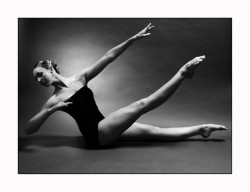
Are alignment and symmetry the same thing?
The notion of symmetry drives a lot of modern bodywork and fitness training. The notion of a symmetrical and anatomically-neutral-looking body—and how I might help a client be that—has certainly guided my practice as a bodyworker and movement trainer.
Many prevalent schools of thought equate symmetrical form with proper form and function (or what we’ll call alignment): chiropractic, massage, yoga, Pilates and Cross Fit to name just a few.
Before we go further, let’s define terms:
By symmetry I mean what we generally consider neutral positions of bones relative to one another. This applies to both left/right sameness, like your hips being level as seen from the front, and also the “correct” contours of the non-symmetrical bony shapes we’d see in a side view.
By alignment I mean the positioning at which forces are able to move through your body with the most ease. This applies whether moving an external object, or in ground-transmission forces, or in any of the nearly infinite variations of human movement.
For example, picture jumping off a chair and landing on your feet. In one scenario, you land with soft feet and knees, and the forces created by your impact with the ground travel up through your whole body, dispersing relatively evenly; that’s good alignment in action. In scenario two, you land hard and abruptly on the outside of your right pinky toe; that’s poor alignment, given the context.
With this example, we can also start to get the picture of why we care about symmetry or alignment in the first place.
Generally, the more structurally balanced we are the more adept we are at moving forces through our body in a way where no particular tissues are over-stressed.
It’s this over-stressed-ness that is at the heart of many chronic, misuse-based, pain patterns.
A simple analogy is to envision your body as a paperclip: bend it generally around all day and it will still remain in integrity, but bend it in a particular spot again and again and…it’s just a matter of time.
Typically, we ask questions concerning skeletal position to determine if someone is aligned or not in a given context. Is your pelvis level in standing? Is your knee staying above your ankle in a walking lunge? Is one shoulder higher than the other? Again, there’s an assumption that the answers to these questions relate directly to functional health and pain levels—otherwise, why would we bother asking—and that to fix that answer, to re-symmetrize the skeletal body, is to fix the problem with function.
I don’t buy it, at least not as the whole truth.
I don’t mean to say that questions regarding symmetry and skeletal position don’t have value—they do, and in fact I’ll visually assess a client’s posture at the start of nearly every session in my office. The relative symmetry and balance of your bones certainly seems to be related to your overall alignment.
It seems that the problem comes when we think the tool—a tool—is the whole story. (Or, as they say in Zen, we mistake the finger pointing to the moon for the moon itself.)
I think equating symmetry, or skeletal position, with true alignment is a problem for at least three reasons:
1. A “well-stacked” and symmetrical skeletal body may or may not point to balance in the surrounding muscles and connective tissue. Remember, that’s important because these tissues are the vehicle with which your body transmits force.
2. It disregards that we have notable variances in our bony architecture. These variances exist both person to person and within a single person. Leg length discrepancies have been happening for millennia; why is it that you need a heel lift now?
3. It tends to divorce the athlete/client from her interoceptive abilities, that is the skill of feeling and sensing her body from the inside out. If I’m just focusing on keeping my pelvis level, I’ll tend to block out any areas of my “body brain,” or cerebral body mapping, that don’t jive with me getting into that position. We’re in the earliest stages of understanding interoception in terms of a Western medicine model, but there’s already research pointing to something pretty intuitive: the more divorced we are from our bodies, i.e. the worse we are at interoception, the more pain and suffering we tend to carry around.
It can be problematic when we impose an external viewpoint (symmetry) on an internal condition (the full-body nervous system mapping that leads to a balance of the soft tissues, which also happens to have the feel of balance, i.e. being able to feel your whole body, 3D, with any movement).
Again, don’t get me wrong: symmetry and skeletal position can be valuable guides.
If someone’s right hip is higher and more forward than the left, there’s a good chance that this postural pattern is indeed pointing to a systemic imbalance, one that is actually evident everywhere in that person’s posture. Treating these postural imbalances effectively can increase someone’s resilience, vitality and health.
So, how do we take symmetry for what it’s worth, and begin to incorporate alignment-based thinking and feeling into our practices, and not confuse the two?
I propose the following for practitioners and movers of any sort to consider:
1. In athletic, position-based activities, start with symmetry and skeletal position as a guide and work out from there.
You’re searching for a sensation—the full-body map, 3D loading of your soft tissues. This kind of alignment can be felt and maybe even seen by an observant trainer, but is much less obvious and much less common to assess than skeletal position.
For example, in a deadlift (a basic but quite injury-prone lift of getting weight off the ground and to your waist), if the athlete has a strong left/right discrepancy in leg tone (regardless of femur length, i.e. true “leg length”), a truly symmetrical position at her hips and legs will likely leave some areas of the powerful glute/hamstring drivetrain underutilized on one side, and overused on the other. In my experience, this makes this athlete more prone to injury and less able to generate the linear power and torque she’ll need to perform at her strongest.
2. If you have parts of your body that you’ve always noticed were out of symmetry, like one shoulder or hip sitting higher than the other, consider: is that asymmetry actually a problem?
I’m not suggesting that misaligned tissue is only a problem when it’s presenting as a pain symptom, i.e. you should only care about one shoulder being higher than the other if it hurts. We are much too complex in our biomachinery for that kind of linear thinking. I am suggesting that we’ve been presented with an image—of function and beauty both—that is simply not the truth for many of us.
3. Consider the skilled application of functional fitness training; even in very light doses, instead of isolated exercises or any movement training where muscle size and bilateral function are the main metrics of success.
Functional training tends to turn a client more towards his internal sense of his body, i.e. interception and proprioception which, in my experience, will facilitate a balanced alignment better than isolated exercises that focus more on numbers.
Exceptions abound—and I’m certainly not implying isolated exercises don’t have their place. However, my experience is that this kind of movement has a fairly low glass ceiling for most of us—and multi-planar, multi-joint movements will tend to produce more positive change for most of us, most of the time, after a certain point in our training.
4. Begin a practice that focuses on becoming better acquainted with your internal felt sense.
This can look like a lot of things, from a somatic meditation practice like Vipassana, to subtle movement practices like Continuum, to barefoot running (with an emphasis on quality of ground contact, not on mileage or time). My personal favorite right now is free-form dancing, and contact improvisation, where I’m able to practice in a space where I’m not worried about what people think of me (because, let’s be honest, explorative movement guided solely by internal sensation can look pretty weird from the outside).
Especially if you’ve had a lot of formal athletic training, and are used to being a good athlete and doing things “right,” this can be a very powerful addition to your training.
It can also be a pretty disarming and disorienting shift, so be gentle and don’t expect too much, too quickly. A little awareness can go a long way.
We live in an age with more concepts on how to stand, sit and move in a “correct” way available to us than ever.
To understand in our own bodies where the guiding principles of our chosen practices came from—whether Pilates, yoga, running, Olympic lifting or simply walking down the street—can be an invaluable asset in guiding where and with whom we seek guidance and training.
To recognize and seek alignment, rather than just external symmetry, can be a pretty direct line into this understanding.
Cheers to the discovery, getting our hands dirty and—hopefully—having some good fun in the process.
Love elephant and want to go steady?
Sign up for our (curated) daily and weekly newsletters!
Editorial Assistant: Terri Tremblett/Editor: Bryonie Wise
Photo: Flickr





Read 2 comments and reply